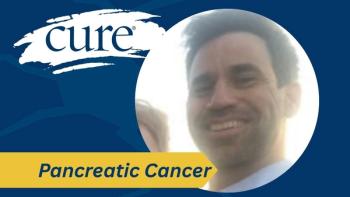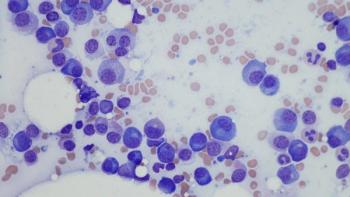
Why Art Was Good Medicine for Me After a Breast Cancer Diagnosis
Key Takeaways
- Art therapy provides a non-judgmental space for cancer patients to express emotions and reduce stress through creative expression.
- Abstract art allows for emotional release without the constraints of realism, offering freedom and escape from perfection.
After my diagnosis, I found a healing balm in an unexpected place. I never knew art would become so vital to my healing.
I’ve always loved art. I can’t remember when I first picked up a crayon or a pencil and began making marks, but I’m sure I was very young and probably didn’t do it on paper. More than likely, since I was a precocious child, I made my first marks on a wall. Though young, I realized there was something about wielding a writing tool that I loved. From that moment on, I made my mark whenever and wherever I could.
As I grew older, I was introduced to other mediums. In school, we experimented with watercolors. They were inexpensive and easy to clean up. I think that’s why the teacher loved them so much. Dipping a brush in water gave me a power I hadn’t experienced before. At that moment, I realized I had a choice – I could pick any color I wanted from the palette of paints. Often, I chose the color red. Red was exciting and bold.
In elementary school, I wasn’t instructed in art per se; the teacher let us create without boundaries. It gave my young self a taste of creativity, and instantly, I fell in love. I wanted to be an artist.
When I was in high school, I never took art classes, even though they were available. I don’t know why I didn’t, but looking back, I should have. Art was so important to me. Whenever I was given an extracurricular project for a specific subject, I did my best to implement artistic license and often won blue ribbons for my work. Those accolades fueled my love of art, and I started to dabble in oil painting. Quickly, I found out oil paints were expensive, took a long time to dry, and required a great deal of effort to clean up, so I shifted to acrylic paints. They were inexpensive and dried quickly.
When I found out I had breast cancer, I was overwhelmed. I felt like I’d been sucker-punched, and all the air had been forced out of me. I did my best to process what I was feeling but found myself without words. That’s when art became my saving grace.
My oncologist told me there were some classes available at our local cancer treatment center. She encouraged me to check them out. After perusing the online calendar of events, I signed up for an art therapy class. I had no idea what that entailed, but since art was involved, I assumed I’d enjoy it.
At the first class, there was a table in the middle of the room. On it were tubes of acrylic paints, brushes, containers of water and small canvases. About 8 women sat waiting for the teacher to tell us what to do. The teacher was an art therapist, but she said she wasn’t there to guide us in making art; she would supply materials, and we’d be given free rein.
Many of the women had no idea where to begin and just sat there, but I was eager to get started. I picked up a brush, some paints and began working. I loved feeling the smooth paint streak across the textured canvas. I didn’t have an image in mind as I painted; I merely made marks and enjoyed making them. The teacher talked as participants worked. She explained that the art therapy class was structured to provide a safe place for expressing our thoughts, emotions and feelings. She said there would be no judgment and no expectations. We were simply to allow ourselves the freedom to create.
For about an hour and a half, I worked. Before I knew it, class was over, and it was time to head home. As I packed up to leave, I realized I hadn’t thought about cancer once since I’d been painting.
When I got home, I looked at the piece of art I’d created. It was an abstract painting. Abstract paintings differ from realistic paintings. Realistic paintings convey an artistic rendition of a real-life object, person, or scene. Abstract paintings are a combination of brush strokes, textures, and colors. Some don’t understand abstract art and say they can’t make sense of it. Though I have painted realistic paintings, I prefer abstract art because it allows me to escape the ideal of perfection associated with realistic art.
Art has been good medicine for me since my diagnosis of breast cancer. When first diagnosed, I couldn’t express all the emotions I was feeling. I did my best to write in a journal but often found myself at a loss for words. It was too challenging to find words that expressed my feelings.
With art, I can stand in front of a blank canvas and within minutes, my brush is dancing across it, putting down paint. As I work, my mind is quiet, my stress is reduced and I experience indescribable freedom. When I complete work, I find my self-esteem has been boosted and I feel a sense of accomplishment and pride.
Art doesn’t have to be an expensive hobby. Creativity can take many forms. For the person with cancer, art therapy becomes a sort of pressure valve that releases pent-up feelings. In other words, it helps one externalize what’s inside.
Many cancer treatment centers offer free art therapy sessions for patients who are going through active treatment but also for those who’ve completed treatment. It’s a wonderful thing for cancer facilities to realize the importance of art as medicine.
I’m thankful art has been such an integral part of my life, and I plan on taking a healthy dose of it each day for the rest of my life.
This piece reflects the author’s personal experience and perspective as a breast cancer survivor. For medical advice, please consult your health care provider.
For more news on cancer updates, research and education,




